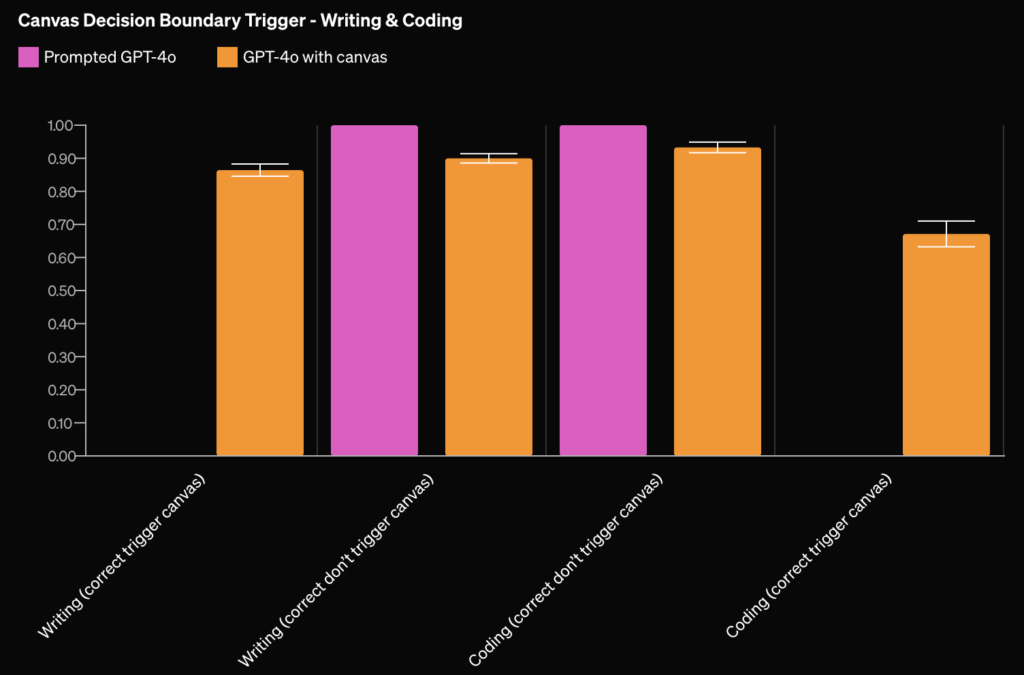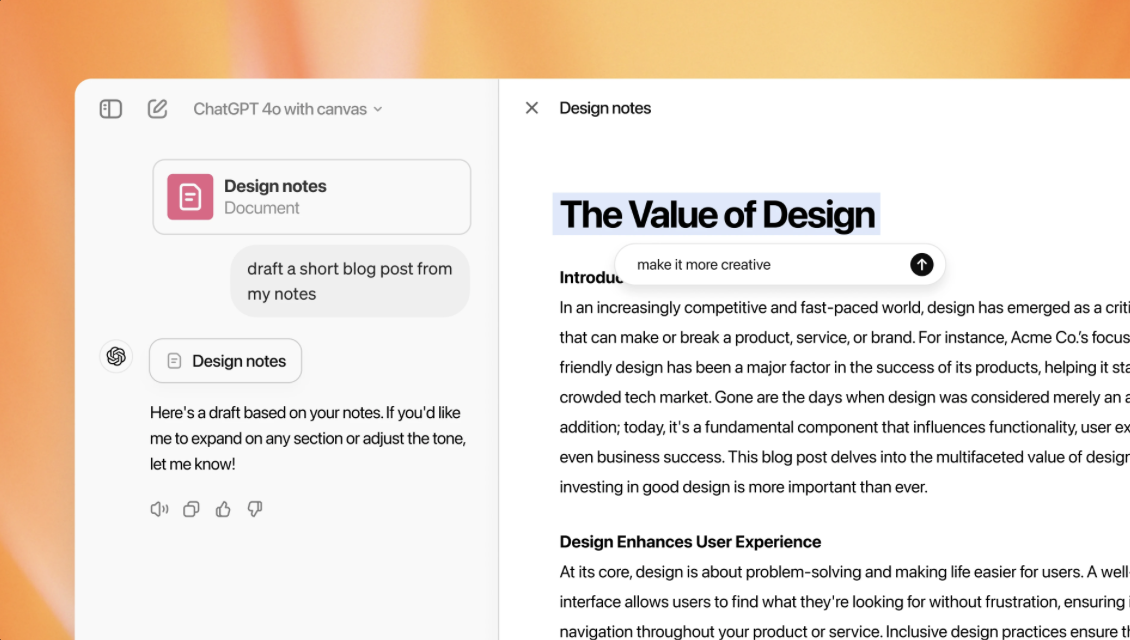Just recently, OpenAI launched a powerful new feature called ChatGPT Canvas, a tool that transforms the way users interact with the AI. This feature is similar to CLA’s Artifacts, offering a versatile space for creating, editing, and collaborating on projects. Canvas allows users to interact with ChatGPT through a separate window rather than a traditional single chat box. In this new workspace, you can edit text, update code, or ask ChatGPT to make targeted adjustments. It’s a creative, user-friendly tool designed for both writers and developers.
Key Features of ChatGPT Canvas
ChatGPT Canvas focuses on two primary use cases: writing and coding. For writing, it helps with suggesting edits, adjusting the reading level, refining the length, and adding a final polish to the content. For coding, it offers assistance like code review, bug fixes, adding comments, and even translating code into different programming languages.

The most significant aspect is that this version of ChatGPT is trained specifically for collaboration through Canvas. Unlike the standard GPT-4, this version can recognize when to activate Canvas, offering a more dynamic and intuitive experience. For developers, this means being able to select and modify specific code snippets rather than needing to generate an entirely new block of code every time.
Platform Risks: Should AI Startups Be Concerned?
The launch of ChatGPT Canvas could be seen as a potential threat to other AI-based Integrated Development Environments (IDEs). OpenAI has traditionally positioned itself as a platform provider, offering tools for developers to build innovative AI applications. However, with Canvas, OpenAI is stepping into more direct competition with these same developers.
This situation is reminiscent of challenges faced by other tech companies that built their products on third-party platforms. A notable example is Twilio, which initially provided telecommunication APIs until it began developing its own competing products. This shift posed a risk to companies relying on Twilio’s API. Similarly, AI startups leveraging OpenAI’s tools might need to consider the risk of OpenAI expanding its own offerings, potentially reducing their competitive edge.
Exploring the Functionality of ChatGPT Canvas
Writing Capabilities: The Canvas feature offers a range of writing tools. Users can highlight specific areas of text and request edits or rewrites directly. Adjusting the reading level or length of content is simple, with options ranging from kindergarten to graduate school levels. This adaptability allows users to tailor their writing style to various audiences with just a few clicks.
Coding Capabilities: For developers, Canvas operates as an interactive coding space. You can review code, ask ChatGPT to add comments, and even translate code between languages like Python, JavaScript, and C++. One notable feature is the ability to identify and fix bugs. However, while it effectively addresses errors, the AI sometimes makes broader changes to the code, which might not always align with the user’s expectations.
ChatGPT Canvas doesn’t yet support code execution, a feature found in tools like CLA’s Artifacts. Still, its potential to streamline code writing and debugging processes makes it a strong contender in the realm of AI-assisted development.
Future of ChatGPT Canvas and Its Impact on the AI Landscape
ChatGPT Canvas is still in its early stages, but its potential is clear. The feature provides a seamless way for users to refine their content and code directly with the AI’s help. It allows for a more iterative approach, making it easier for users to refine and adjust outputs without needing to start from scratch each time.
As OpenAI continues to iterate on Canvas, the platform will likely become even more sophisticated, potentially competing with existing AI-powered coding assistants and creative writing tools. For companies building on OpenAI’s platform, this evolution highlights the need to stay agile and anticipate shifts in OpenAI’s offerings.
Try Canvas at: https://chatgpt.com
ChatGPT Canvas marks a significant step forward in AI-human collaboration, offering a creative and practical way for users to work with ChatGPT in real-time. As OpenAI refines this feature, it could reshape how users approach both coding and content creation. For now, it’s a promising tool that brings new possibilities for innovation and productivity.
Read articles in our Blog:

